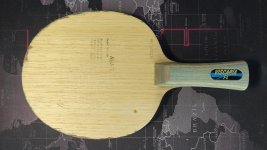This user has no status.
This user has no status.
Well-Known Member
Interesting - I would say 60% of the time I served back or no spin to BH and short topspin to FH. The rest were topspin into BH which caused both some problems if following backspin or no spin.For me, the most important strategy when playing a backhand pimples player is to force him to use the backhand on the forehand side. usually this is done with a serve into the forehand. You have to find the right depth and be able to move to attack the next ball or float/push it back into the backhand corner. But you can't serve the ball to them all the time, you need to get them out of the backhand corner and make them demonstrate some footwork and see what weapons they have built up to defend points when they don't receive serve with the pimples..
It is best to use largely the same serve during the match, mostly backspin and no spin combinations. That said, rotate through *all* your serves in game 1. Use game 1 to learn about the material and the player, do not care about winning game 1 as you need to give yourself freedom to read and attack the ball and adjust to the pace. Game one is usually good when you close strong, even if you go down badly early, and sometimes you may close strong enough to win.
After game 1, usually, most of the rest of the game will be backspin/no spin combinations unless the opponent has show extreme weakness against a serve that you can toss in every once in a while. Again, the serves ideally should force the pips player out of the backhand corner and give you a chance to demonstrate your ability to topspin the nospin ball or to loop backspin.
Learning to serve extremely heavy backspin and no spin combinations with similar motions can be a game changer vs pips players, they rely very often on the fact that most players serves can be easily returned with a chop block or pips push. Making the backspin spin heavy creates a wider degree of variation that means they can't return the ball mindlessly anymore because when the ball goes into the net, they actually have to be active, and being too active against no-spin balls will put the ball off the table.
One of the players very much likes to move across to the FH side using his BH pips - his most effective short is a very direct punch/push deep into my BH and I am not often far enough back to roll over this ball and therefore make many mistakes on snatching at it.











